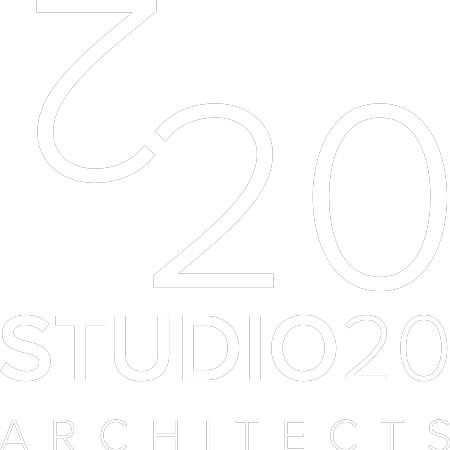Richmond Heathfield Building Regulations: A Comprehensive Guide to Navigating Local Construction Laws
Richmond Heathfield is one of the most coveted areas in Greater London, known for its scenic beauty, blend of historic charm, and modern amenities. Whether you’re an aspiring homeowner, developer, or simply looking to undertake a renovation, understanding Richmond Heathfield building regulations is vital. These regulations not only ensure that your property meets the necessary safety and sustainability standards but also align your project with the area’s commitment to maintaining its aesthetic appeal and environmental integrity.
In this unique and detailed guide, we delve deep into the Richmond Heathfield building regulations, offering insights that are not readily available elsewhere. We explore the intricate details of these rules, explain how they affect your project, and provide tips for successful compliance to make your building process as smooth as possible.
The Importance of Building Regulations in Richmond Heathfield
Building regulations are essential to the safety, livability, and functionality of your property. But they go beyond merely adhering to legal requirements. Richmond Heathfield, with its mix of heritage properties, green spaces, and vibrant community life, requires careful consideration when it comes to construction projects.
These regulations are the backbone that ensures that any construction or renovation adheres to rigorous standards for safety, quality, energy efficiency, and environmental harmony. They protect the local community by safeguarding against poorly constructed buildings, ensuring that developments do not compromise the area’s historical charm, and by preventing unnecessary damage to the environment.
Understanding these regulations in-depth will help you avoid pitfalls, from costly fines to project delays, and enable you to create a space that both meets legal standards and complements the picturesque surroundings of Richmond Heathfield.
Core Aspects of Richmond Heathfield Building Regulations
In Richmond Heathfield, as in the rest of the United Kingdom, building regulations cover various aspects of construction. Let’s break down the core areas that govern your building project:
1. Structural Integrity: The Foundation of Your Project
One of the primary concerns of any construction project is structural integrity. In Richmond Heathfield, especially with many older properties being renovated or extended, it is crucial to ensure that any new work integrates seamlessly with the existing structure. Whether it’s a ground-floor extension or a loft conversion, the new construction must not undermine the building’s safety or durability.
Structural engineers are often required to design and assess the strength of foundations, walls, beams, and load-bearing elements of any new additions. The ground conditions in Richmond Heathfield vary, and in some cases, additional work might be required to stabilize the foundation before construction can begin.
For homeowners and builders, understanding these requirements early on can save you from unexpected delays and costs. Working with professionals who are well-versed in local conditions and regulations will help ensure the structural safety of your building.
2. Fire Safety Regulations: Prioritizing Protection
Fire safety is an area of paramount concern in building regulations. Richmond Heathfield has a wide variety of property types, from Victorian homes to newly constructed townhouses, and fire safety measures must be adapted accordingly. Fire-resistant materials, fire doors, emergency exits, and sprinkler systems may be required depending on the type of building and its intended use.
For example, if you are planning to convert a loft or basement into living space, fire regulations will dictate the minimum requirements for fire-resistant walls, escape routes, and other fire protection measures. Additionally, properties located within close proximity to each other must take into account the fire risk of neighbouring buildings, making fire safety regulations even more important in this area.
3. Sustainability and Energy Efficiency: Building a Greener Future
Richmond Heathfield is an area that values its environmental integrity. This commitment to sustainability is reflected in the building regulations, which increasingly focus on energy efficiency and environmental impact. With the UK’s ambitious net-zero targets, modern construction must comply with stringent standards to minimize carbon footprints and maximize energy efficiency.
For homeowners and developers in Richmond Heathfield, this means that building insulation, heating systems, and even windows must meet high-performance standards. New homes must be constructed with low-carbon materials and energy-efficient systems, and older homes undergoing renovation may need to upgrade existing insulation and heating systems to meet current standards.
Additionally, renewable energy sources, such as solar panels or heat pumps, are encouraged and, in some cases, may even be required. By integrating sustainable practices into your building project, you not only comply with local regulations but also contribute to the preservation of Richmond Heathfield’s green spaces and environment.
4. Accessibility: Creating Inclusive Spaces
Accessibility is a growing concern in modern construction, and Richmond Heathfield is no exception. The aim of these regulations is to ensure that buildings are usable and accessible to all, including those with disabilities. This may include installing ramps, lifts, and wider doors in residential and commercial properties. For example, if you are planning to renovate a listed building or a historic structure, particular attention will be given to maintaining the building’s historical integrity while also ensuring it meets modern accessibility standards.
In some cases, even small extensions or renovations may require the incorporation of universal design principles, ensuring that the space is usable by everyone, regardless of their physical abilities.
5. Plumbing, Drainage, and Water Management: Ensuring Efficiency
A key component of Richmond Heathfield building regulations is the management of plumbing and drainage. These regulations ensure that the property’s water systems—whether for supply or waste—are safely installed, efficient, and compliant with health and safety standards.
For example, rainwater harvesting or greywater systems may be encouraged in new builds to reduce water consumption. Similarly, drainage systems must be designed to prevent flooding, particularly in areas that are prone to heavier rainfall or near watercourses.
Given the emphasis on sustainability, Richmond Heathfield regulations encourage the use of low-flow plumbing fixtures, water-saving appliances, and sustainable drainage systems (SuDS) that help protect the local water table and reduce the risk of surface water flooding.
6. Ventilation and Air Quality: Protecting Health and Comfort
In any modern building, good ventilation is essential for maintaining indoor air quality and preventing issues like mold, condensation, and poor air circulation. Richmond Heathfield’s building regulations emphasize natural and mechanical ventilation systems to ensure buildings remain healthy environments for their occupants.
New builds and major renovations must provide a sufficient amount of ventilation for rooms like kitchens and bathrooms, where moisture levels can be high. In some cases, mechanical ventilation heat recovery (MVHR) systems may be recommended to reduce energy consumption while improving indoor air quality.
For property owners in Richmond Heathfield, it’s important to ensure that your building’s ventilation system is designed to provide fresh air and reduce indoor pollutants while meeting regulatory standards.
How to Navigate Richmond Heathfield’s Building Regulations Successfully
While building regulations can seem like an overwhelming maze, following a structured approach can help simplify the process:
- Engage with Professionals Early: Consulting architects, surveyors, and structural engineers who are familiar with Richmond Heathfield’s specific building codes can ensure that your project is compliant from the outset. Their expertise can help you design a building that is both functional and legally sound.
- Know When to Apply for Planning Permission: In some cases, your construction may require planning permission in addition to meeting building regulations. If your project involves significant alterations to the property’s appearance or structure, make sure to obtain the necessary permissions.
- Get Detailed Inspections During Construction: Building inspectors will visit your site at key stages to ensure that the construction is progressing according to the approved plans. Regular inspections will help catch potential issues early, preventing costly corrections later on.
- Focus on Sustainability: Integrating eco-friendly materials and renewable energy solutions not only aligns with Richmond Heathfield’s building regulations but also future-proofs your property and reduces long-term operational costs.
- Document Everything: Ensure that you have all the necessary paperwork, approvals, and certifications for your building project. This includes structural calculations, plans, and energy performance certificates.
Conclusion: A Collaborative Approach to Building Excellence
Richmond Heathfield’s building regulations offer an opportunity to design and create properties that are both safe and sustainable while respecting the area’s aesthetic and environmental values. By understanding these regulations, property owners, developers, and architects can navigate the complexities of local construction law and ensure their projects are successful.
Ultimately, Richmond Heathfield’s commitment to high-quality, sustainable, and accessible buildings reflects the area’s forward-thinking approach to construction. With careful planning, expert guidance, and adherence to local regulations, your building project will not only meet legal standards but also contribute to the long-term prosperity and beauty of Richmond Heathfield.



No responses yet